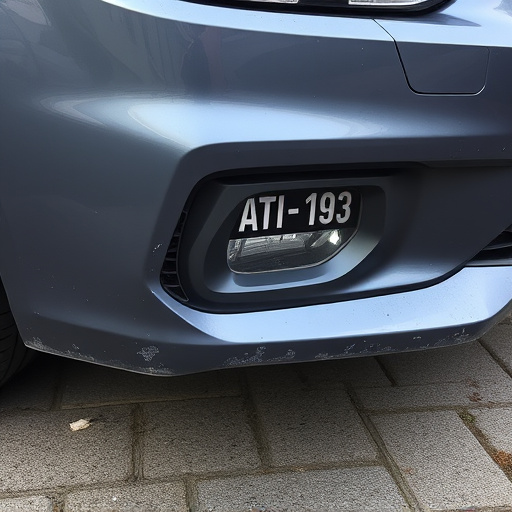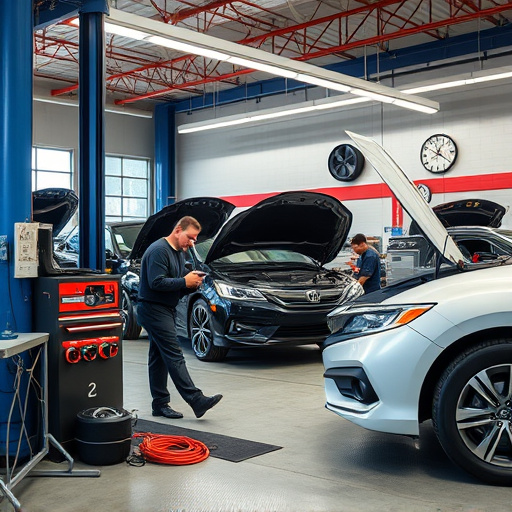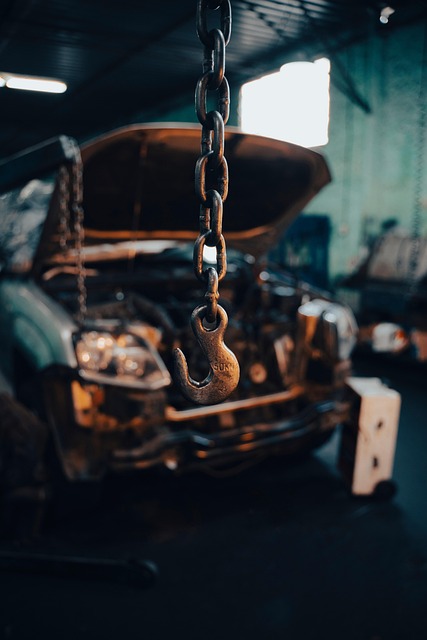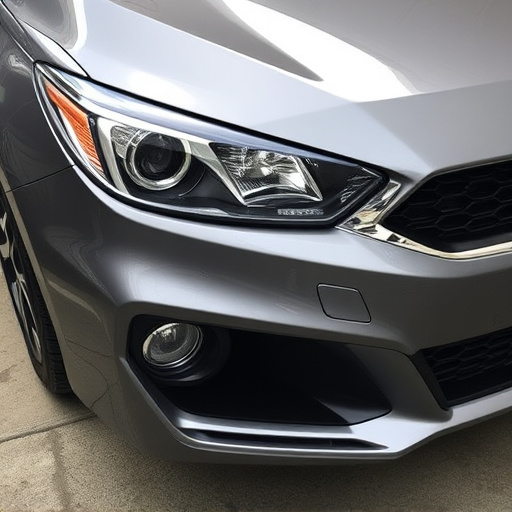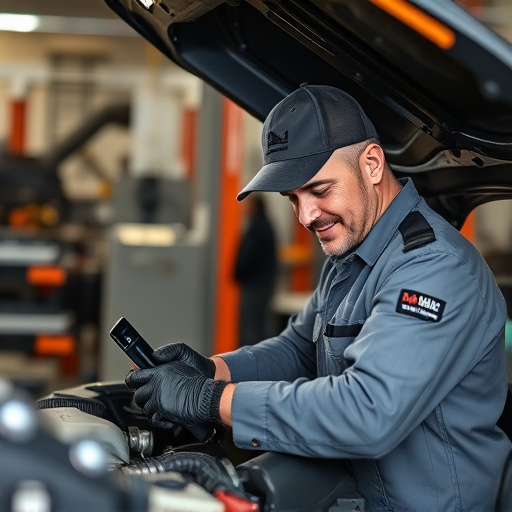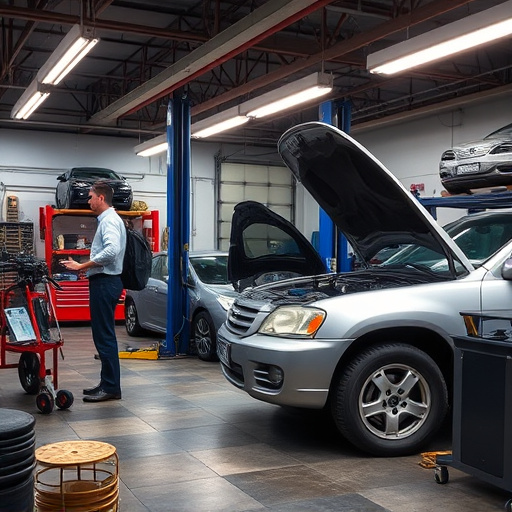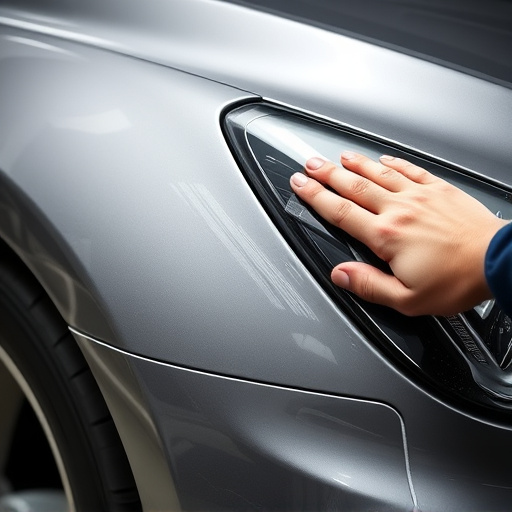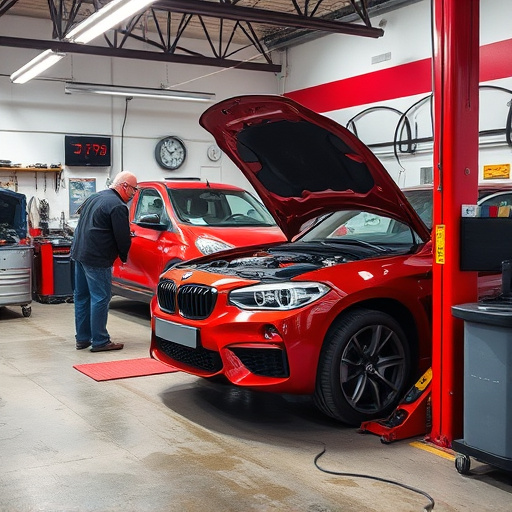Before refinishing a vehicle, technicians must meticulously prepare its surface, addressing defects, dents, and previous repair traces. This involves sanding, priming, cleaning, and using specialized tools to remove damage like rust and old paint. Proper preparation ensures better paint adhesion, prevents issues like blistering or peeling, and leads to long-lasting, high-quality finishes in automotive refinishing.
In the world of automotive refinishing, every technician follows best practices to ensure flawless results. This comprehensive guide delves into the essential steps, from preparing the surface for a smooth canvas using advanced techniques and tools, to choosing high-quality paints for precise color matching. It also covers the art of buffing and polishing, utilizing specialized compounds to achieve a glossy, durable coating. These practices guarantee that vehicles not only look their best but also retain their shine over time.
- Preparing the Surface: Ensuring a Smooth Canvas for Refinishing
- – Understanding surface preparation techniques
- – Essential tools and materials for optimal results
Preparing the Surface: Ensuring a Smooth Canvas for Refinishing
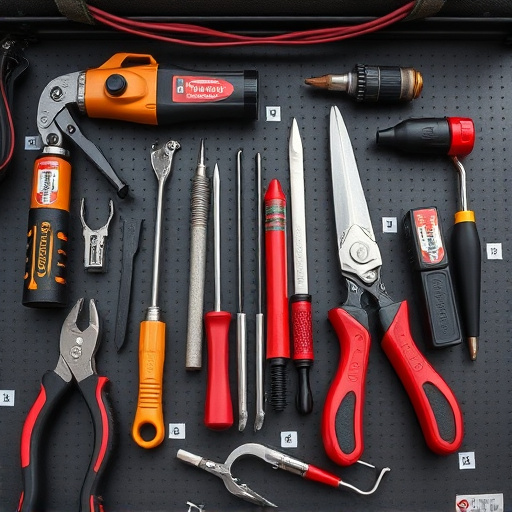
Before any refinishing process begins, technicians must lay the groundwork by thoroughly preparing the surface of the vehicle. This step is pivotal in achieving a seamless and durable finish. The initial assessment involves inspecting the vehicle’s bodywork for any defects, dents, or traces of previous repairs. In an auto collision center, this often includes identifying hail damage repair needs, as well as addressing scratches, rust spots, or paint imperfections.
Preparation techniques vary depending on the extent of damage but generally involve sanding, priming, and cleaning. Sanding smooths out irregularities, ensuring a flat base for painting. Priming acts as a bridge between the existing surface and the new paint layer, promoting better adhesion. A clean environment is paramount to prevent contamination; thus, thorough washing and degreasing are crucial steps in preparing the vehicle’s bodywork for refinishing.
– Understanding surface preparation techniques
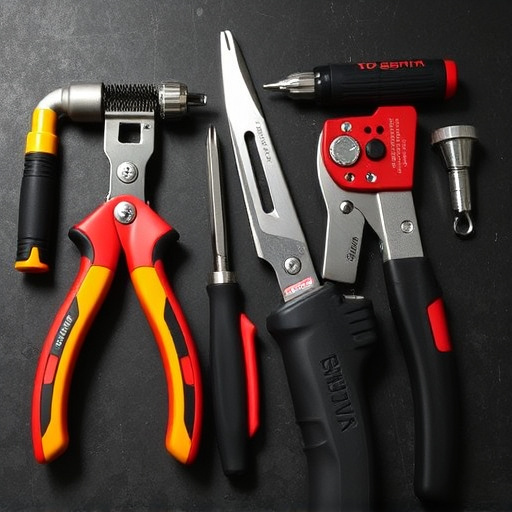
In automotive refinishing, surface preparation is a crucial step that often gets overlooked. It involves thoroughly cleaning and treating the damaged area to ensure a smooth base for the new paint job. Skipping this stage can result in poor adhesion, leading to blistering or peeling of the newly applied coat. Techniques may include sandblasting to remove rust and debris, using degreasers for stubborn oil stains, or employing chemical strippers for old, cracked paint. The goal is to create a clean, even surface that will accept the new paint evenly, ensuring a long-lasting, high-quality finish.
Proper surface preparation is key to achieving professional results in vehicle paint repair. Body shop services that prioritize this step often see better customer satisfaction and less need for touch-ups. By taking the time to correctly prepare the area, technicians can save hours in the long run, as it prevents future repairs from becoming necessary due to poor adhesion or visible imperfections.
– Essential tools and materials for optimal results
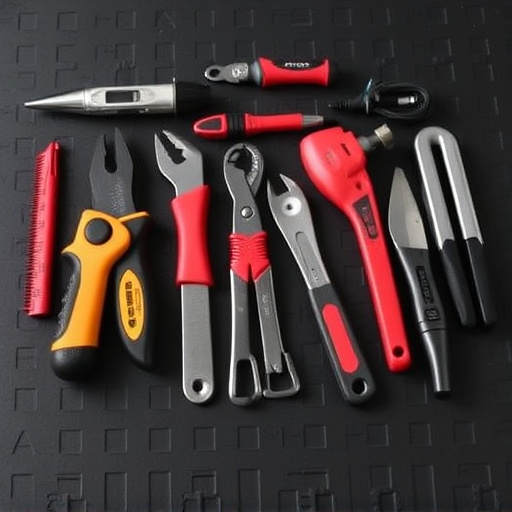
To achieve optimal results in automotive refinishing, technicians must equip themselves with a comprehensive set of essential tools and materials. This includes high-quality sandpaper in various grits for precise surface preparation, as well as durable masks to protect both the work area and the technician during the application process. The use of top-tier paints and primers specifically designed for automotive refinishing is paramount; these products ensure a smooth finish that matches the vehicle’s original factory specifications.
Additionally, a reliable buffer or polisher with adjustable speed settings is crucial for achieving a seamless blend between new and repaired sections. For more intricate repairs like bumper repair or auto collision repair, specialized tools such as putty knives, rubber scrapers, and compound buffers can significantly enhance precision and efficiency. Moreover, proper safety gear, including gloves, respirators, and protective eyewear, is not just recommended but essential for technicians engaging in auto repair services to safeguard against harmful chemicals and debris during the refinishing process.
Automotive refinishing is an art that requires precision and a deep understanding of surface preparation. By mastering techniques like sanding, cleaning, and priming, technicians can ensure a flawless finish. The right tools and materials, such as high-quality sandpaper, solvents, and primers, play a pivotal role in achieving exceptional results. Following best practices guarantees not only the aesthetics but also the longevity of vehicle repairs, leaving customers satisfied with the transformed vehicles.
